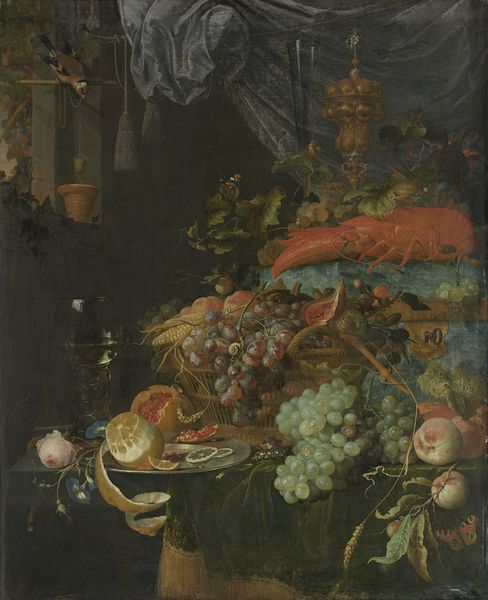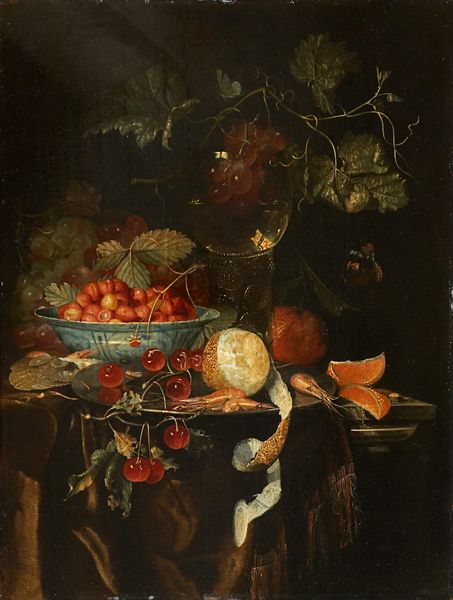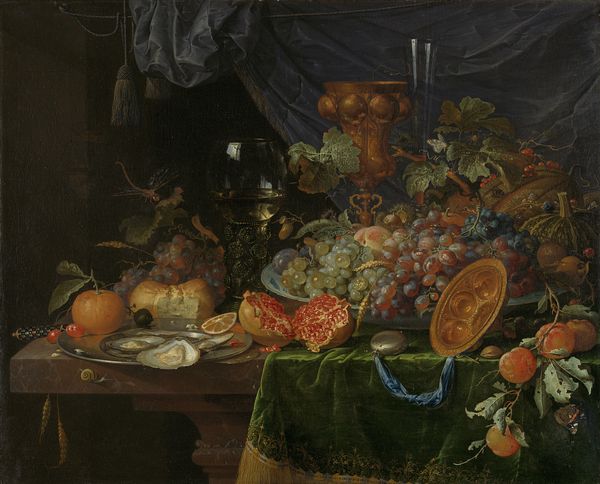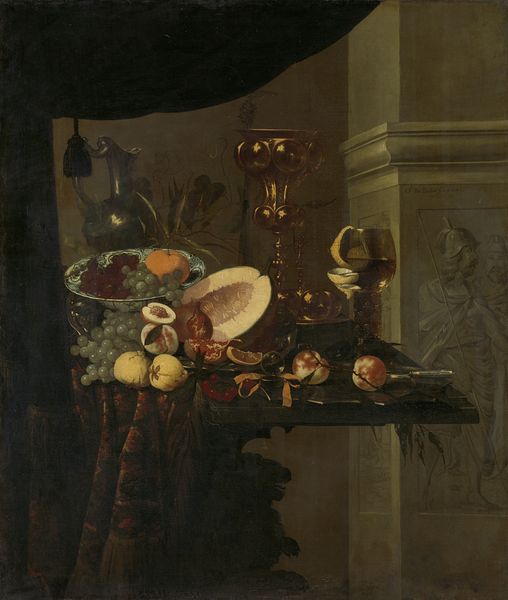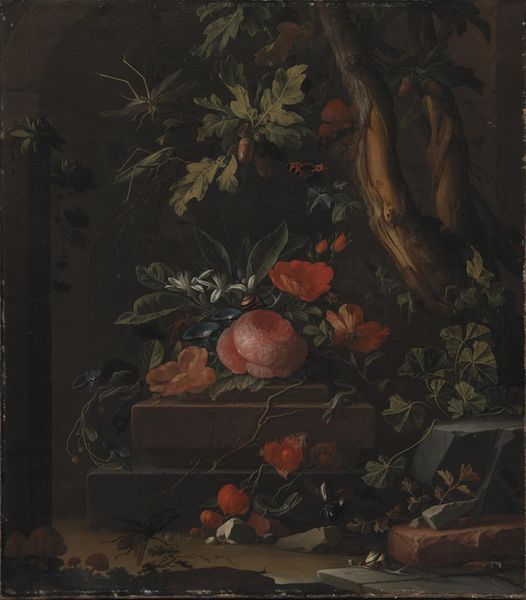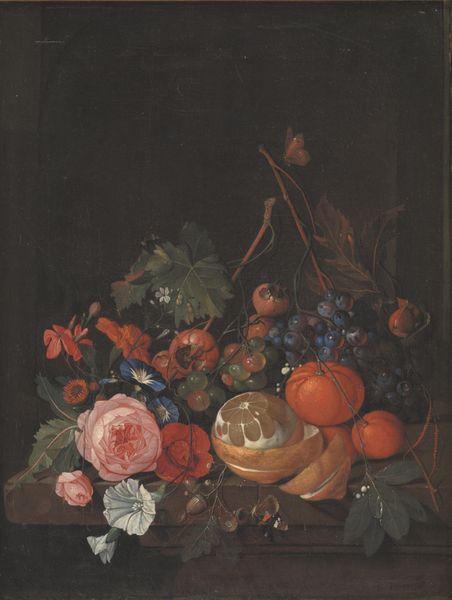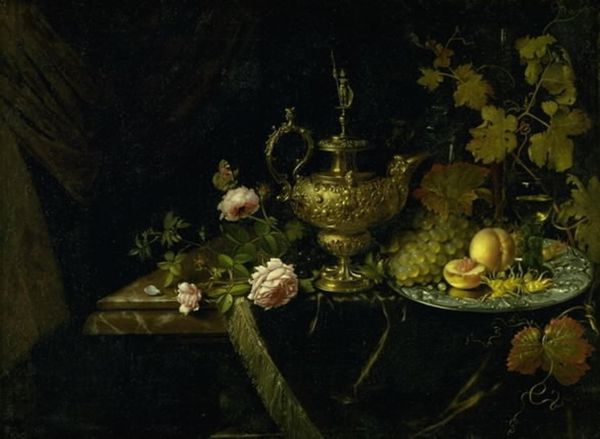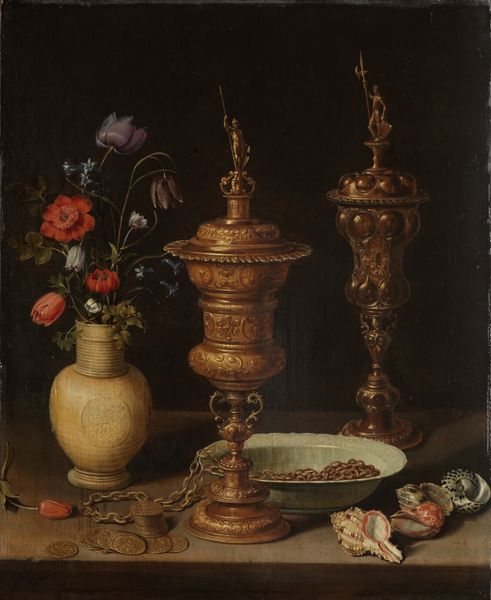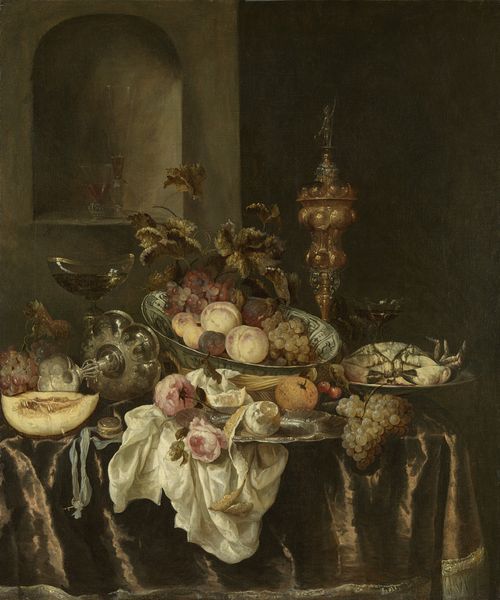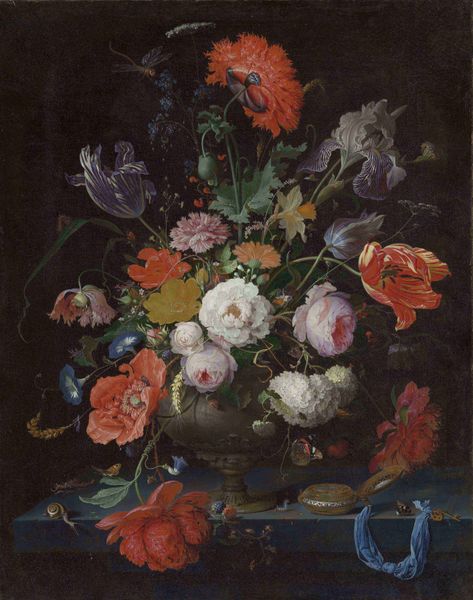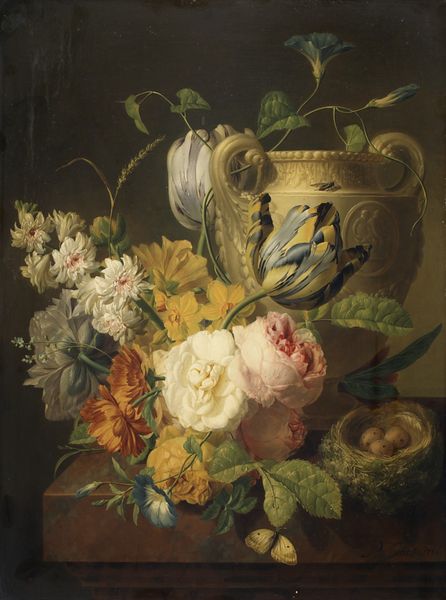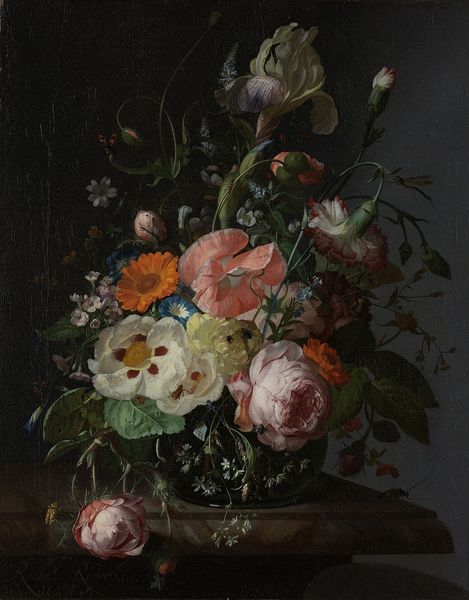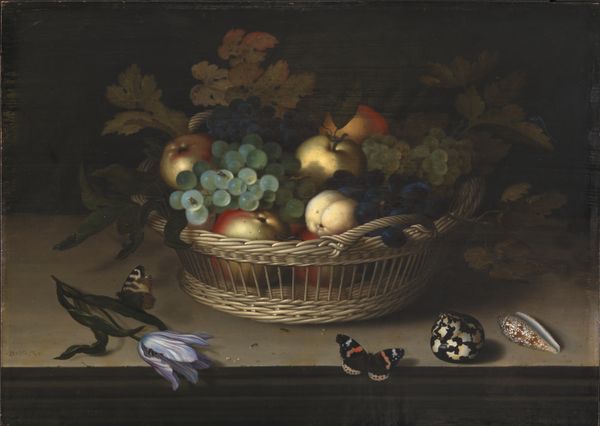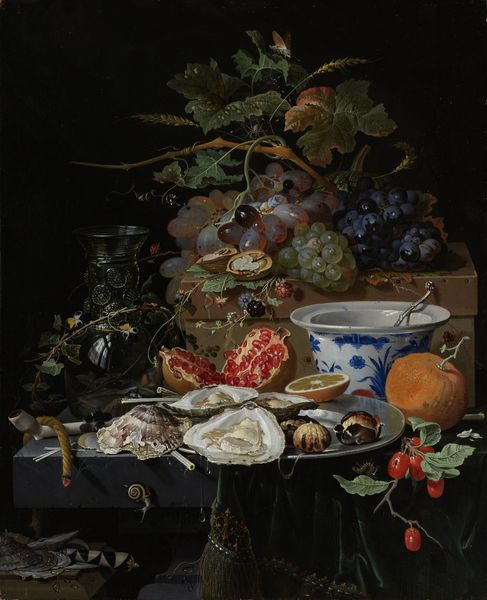
painting, oil-paint
#
baroque
#
dutch-golden-age
#
painting
#
oil-paint
#
geometric
#
genre-painting
#
mixed media
#
watercolor
#
realism
Dimensions: height 110.5 cm, width 88 cm, depth 6 cm
Copyright: Rijks Museum: Open Domain
Editor: So this is "Still Life" painted in 1664 by Nicolaes van Gelder, using oil paints. I find it incredibly detailed and somewhat opulent. What jumps out at you in this piece? Curator: Well, first, I am drawn to how "still life" paintings like these are deeply embedded in the economic and social changes happening in the 17th century Dutch Golden Age. Have you considered the symbolism? Editor: Symbolism? I was focused more on the artistic skill displayed in rendering all those different textures and objects so realistically. Curator: Exactly. Each carefully chosen object—the lobster, the fruit, even the specific glassware—speaks to the wealth and trading networks that fueled Dutch society. These paintings are less about objective reality, and more about constructed identity. Think about the audience for these works. Editor: So it’s less about just painting pretty things, and more about showing off… literally "material" success. Do you think these still lifes contributed to solidifying this new societal order? Curator: Absolutely! Art wasn't isolated, it was central to crafting and reinforcing social hierarchies and economic power. These displays of wealth visually affirmed the status of merchants and the ruling class. Isn’t it fascinating to see how art acts as a kind of silent propaganda? Editor: That completely shifts my perspective. I will now think about art as not existing in a vacuum, but reflecting, supporting, or challenging cultural ideas! Curator: Precisely. It’s about seeing the intricate connection between art and the world in which it was made.
Comments
No comments
Be the first to comment and join the conversation on the ultimate creative platform.
